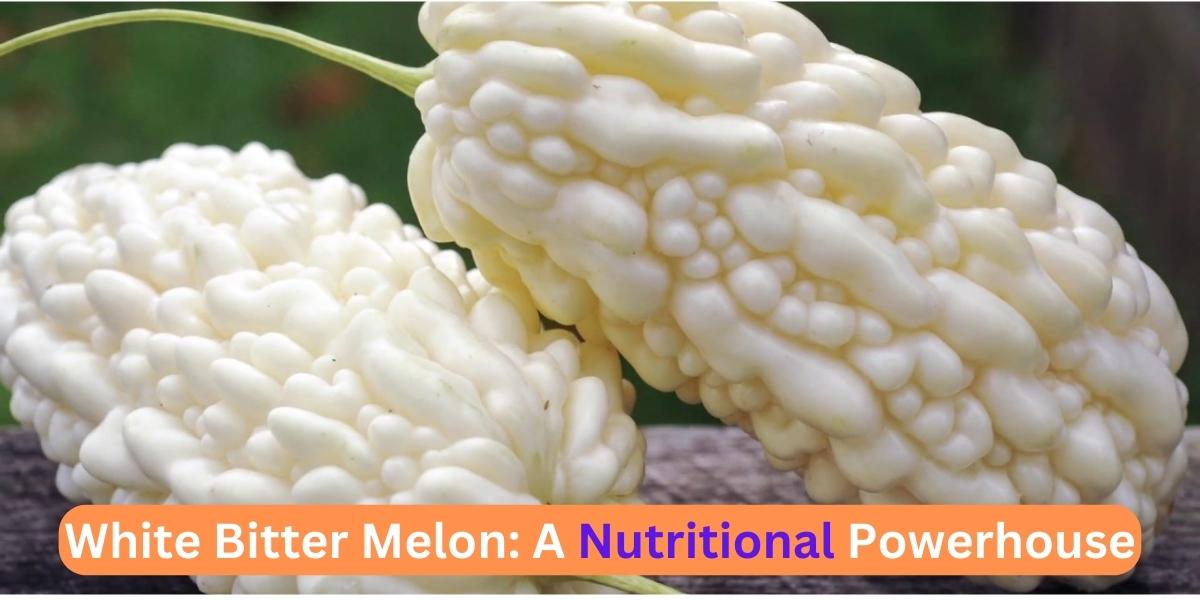Introduction to White Bitter Melon
White bitter melon, a lesser-known variety of the bitter melon family, is gaining popularity due to its unique taste and numerous health benefits. Often overshadowed by its green counterpart, it deserves the spotlight for its culinary versatility and medicinal properties. In this article, we’ll dive into the world of white bitter melon, exploring its botanical background, nutritional profile, health benefits, culinary uses, and how to grow it in your own garden.
Botanical Overview
Origin and Distribution
White bitter melon, scientifically known as Momordica charantia, is a tropical and subtropical vine native to Asia, Africa, and the Caribbean. Although the green variety is more common, it can be found in select regions, particularly in Asia, where it has been cultivated and consumed for centuries.
Morphology
It plants have tendrils that enable them to climb and spread. The fruit, which is the edible part, is oblong and covered in a waxy, bumpy skin. As the name suggests, the fruit has a bitter taste, with the white variety having a slightly milder flavor compared to the green one.
Varieties
There are several varieties of it, differing in size, shape, and bitterness levels. Some popular cultivars include ‘White Pearl’, ‘Snow White’, and ‘White Bitter Gourd’. Each variety has its unique characteristics, making them suitable for various culinary and medicinal applications.
Nutritional Profile
Vitamins and Minerals
It is a nutritional powerhouse, packed with essential vitamins and minerals. It is rich in vitamin C, vitamin A, and several B vitamins, along with minerals like potassium, calcium, and iron.
Antioxidants
This fruit is also a great source of antioxidants, such as flavonoids, carotenoids, and phenolic compounds. These substances help protect the body from oxidative stress and fight off diseases.
Dietary Fiber
It has a high dietary fiber content, which aids in digestion and helps maintain healthy bowel movements.
Health Benefits
Blood Sugar Management
t has long been used as a natural remedy for managing diabetes. It contains compounds like charantin and polypeptide-p, which help lower blood sugar levels and improve insulin sensitivity.
Cholesterol Control
Studies have shown that It can help reduce LDL (bad) cholesterol levels while increasing HDL (good) cholesterol. This helps in maintaining a healthy heart and preventing cardiovascular diseases.
Immunity Booster
The high vitamin C content in it strengthens the immune system and helps the body fight off infections and illnesses.
Cancer Prevention
White bitter melon contains phytochemicals that exhibit anticancer properties. Research has shown that these compounds can inhibit the growth of cancer cells and induce apoptosis, making them a promising natural cancer prevention agent.
Digestive Health
The dietary fiber in white bitter melon aids digestion, helps prevent constipation, and promotes a healthy gut. Additionally, its antimicrobial properties can help maintain a balanced gut flora.
Skin Health
Vitamin A and antioxidants in white bitter melon contribute to healthy skin by promoting cell regeneration, combating inflammation, and protecting against damage from free radicals.
Culinary Uses
Preparing White Bitter Melon
Before cooking it, it’s essential to remove the seeds and pith, as they contain most of the bitterness. Blanching the fruit in boiling water or soaking it in saltwater can further reduce the bitterness, making it more palatable.
Traditional Dishes
It is used in various Asian cuisines, including stir-fries, soups, and curries. It pairs well with spices, herbs, and other vegetables, offering a unique flavor profile to dishes.
Creative Recipes
For those looking to experiment, it can be used in salads, smoothies, and even desserts. The mild bitterness adds a delightful contrast to sweet and savory dishes alike.
Growing White Bitter Melon
Planting and Cultivation
You can grow it from seeds or seedlings, with planting usually occurring in the spring. The plants thrive in warm temperatures and well-draining soil, requiring a trellis or support structure for optimal growth.
Harvesting and Storage
Its fruits are ready for harvest when they reach their full size and have a smooth, shiny surface. You can store it in the refrigerator for up to a week after harvesting.
Pests and Diseases
Plants are susceptible to pests like aphids and diseases such as powdery mildew. Regular monitoring and timely intervention can help ensure a healthy and bountiful harvest.
Conclusion
White bitter melon is a versatile and nutritious fruit that deserves a place in our kitchens and gardens. By incorporating this unique ingredient into your diet, you can enjoy its numerous health benefits while exploring new culinary possibilities.
FAQs
Is white bitter melon less bitter than the green variety?
Yes, It tends to have a milder bitterness compared to the green variety, making it more appealing to some people.
Can white bitter melon be eaten raw?
While it’s safe to consume raw, it is usually cooked to reduce its bitterness and improve its taste.
How can I reduce the bitterness of white bitter melon?
Removing the seeds and pith, blanching in boiling water, or soaking in salt water can help reduce its bitterness of it.
Is white bitter melon safe for pregnant women?
It’s Moderate consumption is advisable during pregnancy as excessive intake may cause uterine contractions. It’s always best to consult a healthcare professional before consuming new foods during pregnancy.
Where can I find white bitter melon?
You can commonly find it in Asian markets and specialty grocery stores. You can also grow it in your own garden if you have access to seeds or seedlings.

